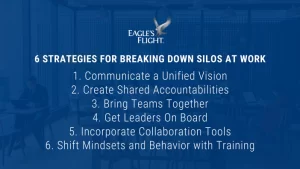Creating a high-performance culture is a journey that has the potential for many pit stops and breakdowns along the way. Plastering your company’s desired idea of a high-performance culture throughout the walls of the company is certainly a step in the right direction, but a company’s culture is really defined by what the people of the organization do.
In a great culture, people contribute to their fullest. Unfortunately, most organizations leverage only about 70% of an individual’s contributions. The remaining 30%–what the company doesn’t get—is the high performance. Here are 10 qualities a high-performance culture must consistently demonstrate:
1. Embrace a change mindset.
Change is central to innovation and growth. To get ahead of the competition, companies reinvent jobs, processes, structures, and work practices. Ultimately, the future of most businesses and individuals depends on the ability to change, learn, and to grow, which means each individual on the team must demonstrate a change mindset.
2. Develop strong leaders.
Creating a high-performance culture composed of individuals eager to outperform requires leaders who constantly inspire and engage employees to be the best they can be. Strong leaders build loyalty and inspire people to work hard to fulfill their job duties. Leaders need to engage, align, inspire, and mobilize individuals and teams to create a high-performance culture.
3. Empower people to make decisions.
Companies with high-performing cultures encourage individuals to ask questions, make decisions, and act upon those choices. High-performance cultures trust individuals’ decision-making abilities and create environments where they feel like owners. In this setting, individuals who feel empowered to solve problems and try new approaches to old problems or procedures tend to be more enthusiastic about their jobs. And, individuals who feel this way are less likely to become disengaged or seek work elsewhere.
4. Adopt a strategy of continuous improvement.
High-performing companies constantly strive to simplify, improve, and align their processes to respond to events effectively and to eliminate unnecessary procedures, work, and information overload. These companies also measure progress, monitor goals, and report everything that matters to everyone in the organization so that all individuals have the necessary information to drive improvement.
5. Establish meaningful core values.
Companies with this type of culture ensure that their commitments are aligned with established core values and have clear ethics supported by organizational policies.
6. Develop a coaching mindset.
Companies with high-performing cultures insist that coaches make their people feel valued and powerful; ask questions and listen; offer reflections, observations, and suggestions; and schedule debriefing sessions. Individuals in coaching roles take responsibility for their own development and performance, too.
7. Enhance training and development.
Engaged organizations recognize that setting their people up for success will result in continuous improvement and growth for individuals and for the company. Talent is viewed as an asset and customized training and development plans align with the organization’s overarching objectives and direction, providing individuals with clear career pathways.
8. Share information.
Creating a culture of transparency, openness, and trust by encouraging the free flow of information can give companies a powerful competitive edge. This happens when individuals share knowledge and ideas because they’re part of a culture that wants them to do so. It’s also important to encourage open and honest debate and urge people to report errors or concerns without fear.
9. Make work enjoyable.
High-performing companies that incorporate fun and engaging activities into their cultural fabric report many positives including higher morale and productivity, reduced stress levels, lower absentee and attrition rates, and an increased ability to attract and retain key people. While individuals are encouraged to have fun at work, they also work hard and are judged on their successes and job performances.
10. Measure culture.
High-performing cultures are characterized by an ability to align, execute, and renew. Moving towards and maintaining a high-performance culture requires measurement along the way to determine where progress is being made. As the age-old saying goes, what gets measured, gets improved.
Creating and maintaining a high-performance culture is challenging, and it can be done. Ultimately, though, there is no one-size-fits-all when it comes to culture. The specifics of a high-performance culture are unique to your company because they’re based on what will work best for you to reach your destination.









